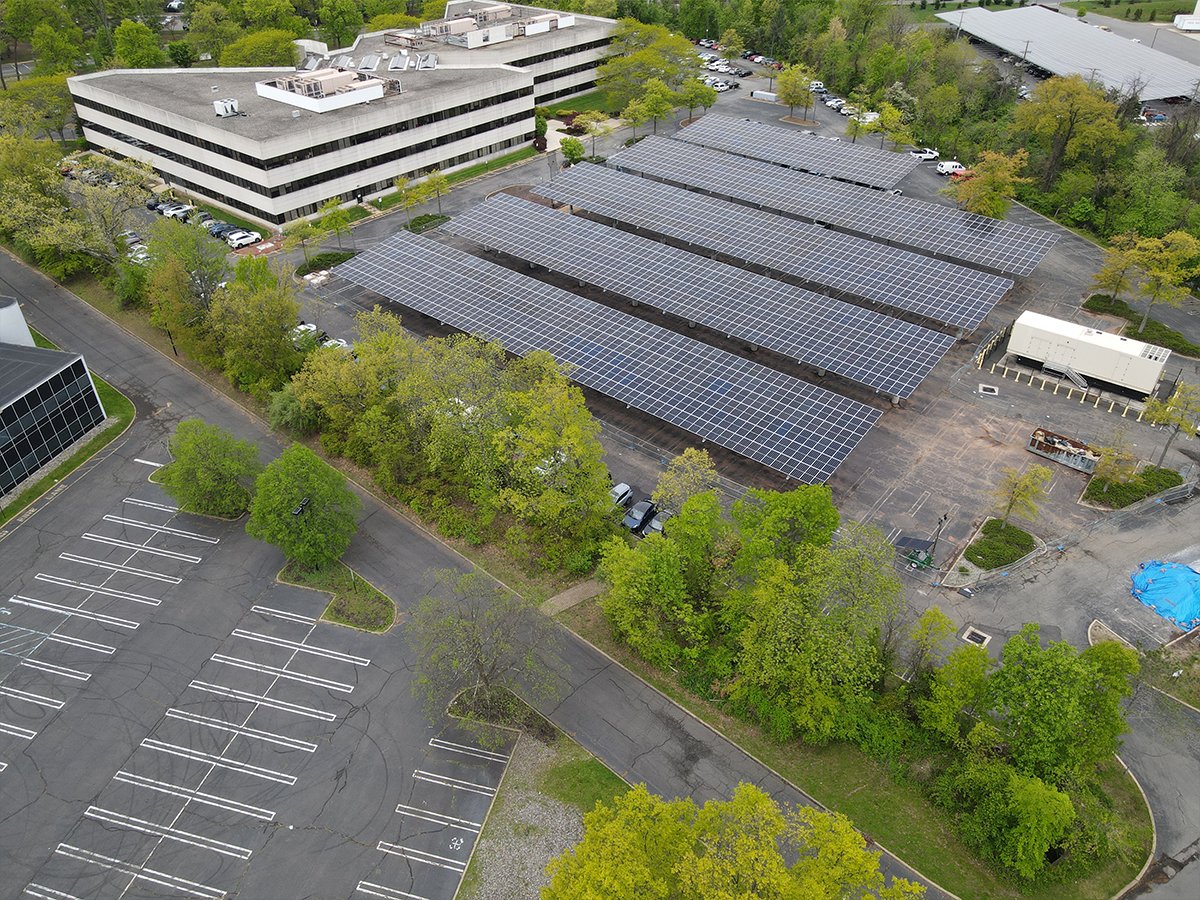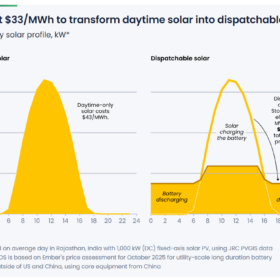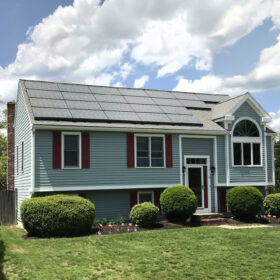In May, the U.S. consumer price index showed that electricity rates rose 4.5% year over year — nearly double the overall inflation rate — because of demand driven by data centers and AI infrastructure’s growing energy needs. According to SEIA, the U.S. will require 207 GW of new electric capacity by 2030. With solar and battery storage, the country could reach that threshold by early 2027 — but without them, it will fall short, adding just 66.6 GW (32% of target) by decade’s end.
In addition to the national shortfall, the renewables sector is navigating the new reality and challenges that come after the passage of the One Big Beautiful Bill Act. The solar industry will continue to adapt to these new challenges and help schools take advantage of what these solutions have to offer. On-site systems, paired with battery storage, allow schools to rapidly hedge against volatile electricity prices by locking in predictable rates and redirecting their savings toward educational priorities. Despite these clear advantages, only around 7% of K-12 public and private schools had installed solar systems by the end of 2023, according to Generation180’s biennial “Brighter Futures” report.
These rising costs, coupled with untapped opportunity in the right markets, offer developers a strong and proven path forward to provide schools, colleges, and universities with impactful solutions that help boost bottom line, enhance reputation, and enrich student’s learning experiences.
The advantages of solar power in schools
It’s important to communicate the value and financial benefits clean energy has to offer, regardless of the type of school or size. For example, Manchester Community College in Connecticut created long-term budget stability with an on-site solar system that will meet 45% of its electricity needs and save $220,000 annually. It’s part of an estimated $15 million in savings over 20 years at the Connecticut State Colleges and Universities (CSCU) system. Additionally, San Bernardino City Unified School District, the seventh-largest in California, installed a 5.6 MW canopy portfolio across 16 schools that will contribute to an estimated $60 million in savings in electricity costs over 30 years, providing additional funding for campus facilities, faculty and classrooms. And Batesville School District in Arkansas offered each of its teachers raises of up to $9,000 per year with the money saved following its solar switch.
Beyond the bottom line, solar energy can significantly improve an institution’s social impact. In Minneapolis, North Community High School’s innovative community solar system allocates 20% of its array’s electricity to Minneapolis Public Schools and the city government, demonstrating how a solar project can benefit the school and its neighbors. The remainder is available to local subscribers and prioritizes families that typically lack access to solar energy. This model can cut costs while highlighting a school’s commitment to energy equity and community engagement.
Lastly, solar installations offer unparalleled educational opportunities. The University of Maryland Eastern Shore leverages its 17-acre, 2.2 MW solar farm to supply 15% of its electricity while providing hands-on research in renewable energy to its students. And for K-12 schools, programs like Missouri Schools Going Solar bring solar education directly into classrooms by rounding out the curriculum and raising awareness of solar energy technologies that are in use worldwide. This model shows schools how solar implementation can help them go beyond simply cutting costs by encouraging workforce participation, particularly when local labor or student training programs are connected to your project.
Supporting schools in their transition to solar power elevates their standing as centers of sustainability and innovation. Properly conveying these benefits and educating institutions on the vast benefits solar offers can help developers in exploring new opportunities to deliver valuable projects to schools and colleges across various regions.
The steps to solar implementation
Although bringing solar power into a school setting may seem complicated, the process resembles a typical commercial installation — with additional intangible benefits.
Begin by working with the school on a plan that outlines its budget, clean energy objectives, potential project locations, and any special requirements or logistical constraints. Review local permitting and zoning regulations and encourage early coordination between school administrators and municipal officials to research incentives and ensure alignment.
Next, demonstrate familiarity with the education market. School projects are most successful when you can evaluate site readiness, present scalable system designs, offer multiple financing options, and reduce or eliminate startup, maintenance, or operational expenses.
Then, help guide the school in identifying the optimal solar system type for them. Rooftop, ground-mount, and canopy systems are the most prevalent on-site installations, and each has its advantages depending on space and aesthetics. It can also be worth educating schools and universities on off-site solar options, such as community solar, that allow for continued cost savings without hosting the system on-site. For instance, Arizona State University’s comprehensive approach includes on-site and off-site components that total over 53 MW of solar capacity.
Finally, know that schools will be turning to you to help them understand the various options when it comes to financing their solar project. Roughly 80% of school solar installations are primarily financed by third parties, according to Generation180. As opposed to owning the system and handling the long-term maintenance of the site, power purchase agreements (PPAs) can eliminate the school’s upfront and operating costs, and renewable energy certificates (RECs) offer additional flexibility because they can be bought and sold to meet regulatory requirements or energy goals. Stanford University, for example, has achieved 100% renewable electricity by combining on-site generation, off-site PPAs, and RECs.
With the right structure, you can make a school’s renewable energy transition a reality.
The future of solar in education
Solar power is gaining momentum at schools, colleges, and universities nationwide — but it’s not happening fast enough.
U.S. schools increased their cumulative installed solar capacity by 10.3% from the end of 2021 to the end of 2023, according to Generation180. That’s enough energy to power 330,000 homes a year. Additionally, 6.2 million students were learning in solar-powered environments and experiencing the benefits of renewable energy firsthand.
Now, imagine if every K-12 school in the country transitioned to 100% solar power. They would eliminate 60 million metric tons of carbon dioxide (CO2) emissions annually — the equivalent of shutting down 16 coal-fired power plants.
It’s an ambitious vision, but one that’s increasingly necessary. As national electricity demand surges, the window for action narrows. Schools that delay incorporating solar energy will face higher energy costs and greater long-term budget uncertainties. Getting schools on board with solar now can protect their budgets and prepare students for the energy systems that will power tomorrow. If they don’t, the options ahead will only be more difficult and more expensive to deploy.

David Eisenbud is vice president of origination at DSD Renewables.
The views and opinions expressed in this article are the author’s own, and do not necessarily reflect those held by pv magazine.
This content is protected by copyright and may not be reused. If you want to cooperate with us and would like to reuse some of our content, please contact: editors@pv-magazine.com.








By submitting this form you agree to pv magazine using your data for the purposes of publishing your comment.
Your personal data will only be disclosed or otherwise transmitted to third parties for the purposes of spam filtering or if this is necessary for technical maintenance of the website. Any other transfer to third parties will not take place unless this is justified on the basis of applicable data protection regulations or if pv magazine is legally obliged to do so.
You may revoke this consent at any time with effect for the future, in which case your personal data will be deleted immediately. Otherwise, your data will be deleted if pv magazine has processed your request or the purpose of data storage is fulfilled.
Further information on data privacy can be found in our Data Protection Policy.